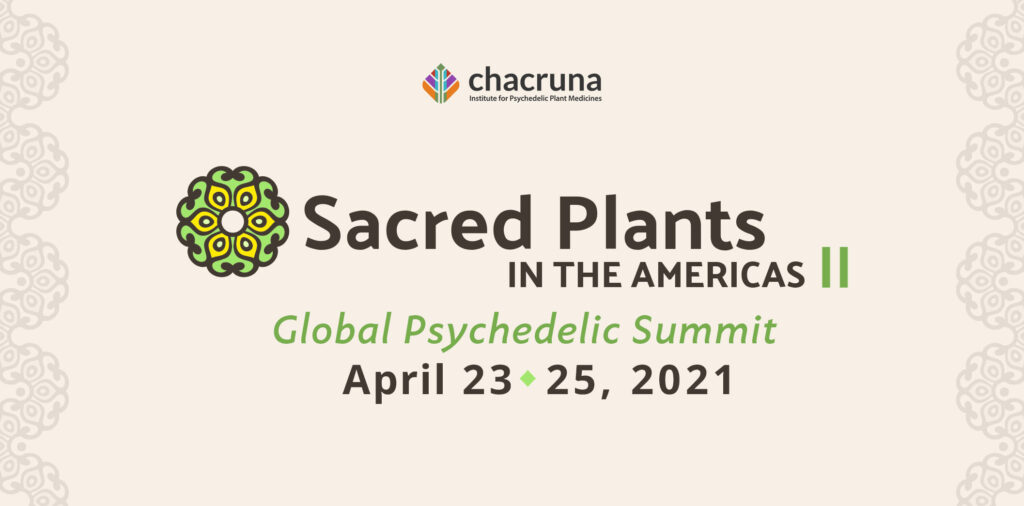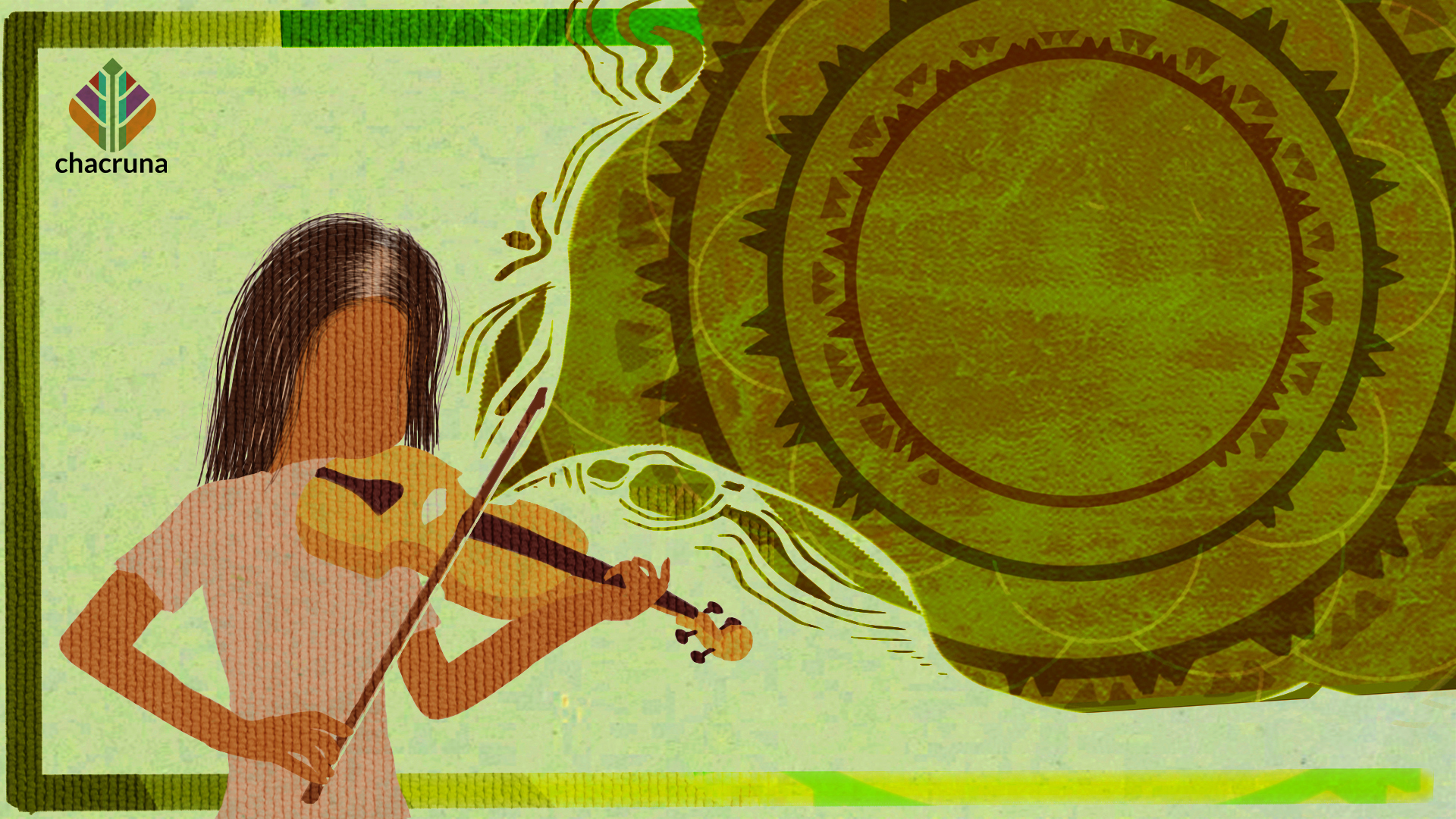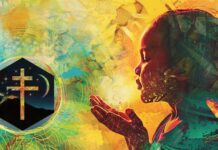- Remembering to Forget: How the UK Disappeared from the Psychedelic Map - November 17, 2023
- A Historian’s Reflection on Music and Psychedelics - December 16, 2020

I will never forget the moment music transported me out of my own body.
I was eleven years old, performing the fourth movement of Handel’s D major violin sonata at St. Patrick’s Episcopal Church in an affluent neighborhood of Washington D.C.
Nothing prepared me for this transcendental experience. By then, performing music in a church was part of my weekly routine. My mother was the junior choir director at St. Alban’s church, and I spent Wednesdays and Sundays singing under her direction. Saturday mornings were devoted to violin group lessons at St. Patrick’s. And four times per year, I performed in violin recitals at St. Patrick’s. A student was never allowed to perform a solo before it had been shaped and perfected, until it had undergone exposure and critical analysis in master classes and group lessons, leaving most of us in tears.
For seven years, I had resisted. In kindergarten, I smashed my bow on my classmate Steven’s head, splitting it in two from the tip to the frog. I threw my violin across the room on multiple occasions. Music became my enemy. It was an amorphous spirit that somehow dictated my weekly schedule. Churches became prisons to me, places I was deposited for long hours where I was forced to sit, stand, kneel, or bow at strange intervals. I had never been baptized or sent to Sunday school and had no context for the unfamiliar rituals. Prayer words swirled randomly in my head. I was never sure why I was asking for forgiveness for “trespassing against those who trespass against us” Sunday after Sunday. Mostly, my mind floated, bored, sleepy, resentful of the constant intrusion into sleep and peace.
Until that Sunday afternoon violin recital when I performed Handel and everything changed.
A Musical Awakening
It is difficult to put certain experiences into words as words do not seem to do justice to something indescribable. And yet I can recall the moment as vividly as if it were happening to me right now. I can hear the notes—indeed, I am producing them. They are more than notes; they are an explosion of happiness. “I AM HERE,” they declare, “THIS IS ME.” But somehow, it is more than me. I am part of the music. I am captured by it, it seduces me out of my body, challenging my understanding of boundaries between myself and some greater yet immeasurable being.
“They are more than notes; they are an explosion of happiness. ‘I AM HERE,’ they declare, ‘THIS IS ME.’ But somehow, it is more than me. I am part of the music. I am captured by it, it seduces me out of my body, challenging my understanding of boundaries between myself and some greater yet immeasurable being.”
Was this God? I was, after all, in church. But God had never spoken to me and I had spent countless hours in religious buildings. Having never been baptized, I entertained myself in services by accepting communion one week (ooh, the swig of sweet wine that I could swirl in my mouth) and the blessing of the unbaptized the next week. I enjoyed the feeling of the woman minister’s soft fingers making the sign of the cross on my forehead, and her smiling eyes cast upon me. But I certainly did not feel that God was blessing me. If anything, I looked forward to communion because it was a sign that at long last, the service was coming to an end.
If it was not a religious conversion, what was happening to me? I felt a huge release, as if years of anger and resentment melted away and were replaced by a realization that I was not trapped, but entirely free. I had been welcomed and was participating in something far larger and more important than I ever knew existed.
To this day, all I need to do is take out my violin and play a few measures of the Handel sonata to transport myself back to that moment. But until my recent research into the history of LSD, I had not given much thought as to what, if anything, my experience as an eleven-year-old really meant.

Join us at Sacred Plants in the Americas II
Music and Psychedelics
On September 27, 1948, twenty-seven-year-old violinist Helen Bonny had a similar encounter. She was performing “The Swan” from Saint-Saens’ Carnival of the Animals during a church service when she experienced a “deeply spiritual, music-generated peak experience.” She later believed that this was the moment that inspired her to develop a new method of expressive therapy she called “guided imagery in music.” What had happened that day? “It was as if the violin was not my own,” she wrote, “bow arm and fingers were held in abeyance/obedience to a light and wonderful infusion that created an unbelievable sound I knew I had not ever produced before. The notes mellowed and soared with exquisite grace. Astonished, delighted, I almost stopped what I was doing to fully hear the beauty.”
I have no doubt that music has had a transcendental effect on individuals across centuries and cultures. One only has to walk into a grand cathedral while an enormous pipe organ blasts triumphantly to imagine the powerful effect it would have for those seeking comfort, guidance, or a sign of salvation.
But what if we take that somewhat universal potential of music to heal and release, and apply it to a particular context? Shortly after Bonny’s spiritual awakening during “the Swan,” and well before mine during the Handel sonata, music became entwined with a new therapeutic remedy to heal the afflicted mind. Bonny would play a key role in bringing the two together. For a time, whether one suffered from neurosis or alcoholism or schizophrenia (or shyness or depression or really, any kind of discontent), the new science of psychedelics promised to liberate sick minds and enrich the soul.
“For a time, whether one suffered from neurosis or alcoholism or schizophrenia (or shyness or depression or really, any kind of discontent), the new science of psychedelics promised to liberate sick minds and enrich the soul.”
Bonny landed in an ideal setting in which to experiment with the healing powers of music. In 1968, she became a research fellow and music therapist assisting in LSD therapy sessions at the Maryland Psychiatric Research Center (MPRC). In 1972, she co-authored a study on “The Use of Music in Psychedelic (LSD) Psychotherapy” with Walter Pahnke. Assessing the impact of music in over 600 drug sessions at MPRC, they concluded that “music is a very effective stimulus and complement to drug action.” A careful selection of “appropriate” music, they found, could direct and structure the patient’s therapeutic journey, enabling “him to yield completely to his emotions.” Ideally, music helped to facilitate an intense, positive, “peak” experience with life-changing results. As Israeli psychiatrist Pinchas Noy explained, “A person going through such a musical experience may feel as if the limits of his ego dissolve and as if he is about to unite with the universe, and even to master it.”
Though the MPRC LSD studies were terminated later in the 1970s, the use of music to enable patients to experience altered states of consciousness without drugs continued. Psychiatrist Stan Grof, who worked with Bonny at the MPRC, developed “Holotropic Breathwork” as a “safe and effective way of using one’s own breath to induce non-ordinary states of consciousness” in the late 1970s. Music is central to this process, and today, you can download holotropic breathwork playlists on Spotify and YouTube.
Searching for the Future in the Details of the Past
In 2018, I met Stan Grof for the first time and participated in a two-day holotropic breathwork session. I came wearing my “historian’s” cap—intrigued by the history of psychedelic therapy. I wanted to experience firsthand this mysterious and mystical process which had had cropped up midcentury and then virtually disappeared. But by the end of the workshop, my historian’s cap was nowhere to be found. Instead, I reconnected with my eleven-year-old self, the girl with the violin, whose sense of self was seamlessly entwined with the musical notes of a Handel sonata.
Despite my musical transformation, I remain passionate about the study of history, and committed to capturing the important chapter of our psychedelic past. Much of the history of therapeutic LSD remains hidden, buried in archives and attics. Many of those who sought treatment captured their stories in diary entries, letters to their therapist, or on a tape recorder as part of a scientific study. If we really want to understand the LSD effect, we have to look at the private conversations, the whispered secrets, the hopes and struggles and angst of those who spent most of their time suffering in silence. We need to take into account the aspirations of young psychiatrists eager to understand how the brain works, who for the first time began to understand the fluid boundaries between the well and the unwell. We need to feel the fear and anguish of the suffering along with the optimism that a new drug could reveal, finally, the mysteries of the mind. We need to map the curious convergence of the “objectivity” of science with the “subjectivity” of individual experience.
“We need to map the curious convergence of the ‘objectivity’ of science with the ‘subjectivity’ of individual experience.”
One of the reasons for the current influx of interest in psychedelic therapy is simply this: we are desperate. In the twenty-first century, we may live longer. We may be able to discover our entire genetic makeup and use our phones to track our medications along with our children. But we are to a large extent fundamentally unhappy. Our search for a cure turns out to be even more complicated than that for cancer. Technology has not provided the answer. But the clues are out there, in places we have not been trained to look. Sometimes, if you are able to be transported outside of the norm, whether through meditation or music or even a drug, you can begin to see the bigger picture.
Art by Mariom Luna.
Take a minute to browse our stock:
Did you enjoy reading this article?
Please support Chacruna's work by donating to us. We are an independent organization and we offer free education and advocacy for psychedelic plant medicines. We are a team of dedicated volunteers!
Can you help Chacruna advance cultural understanding around these substances?














